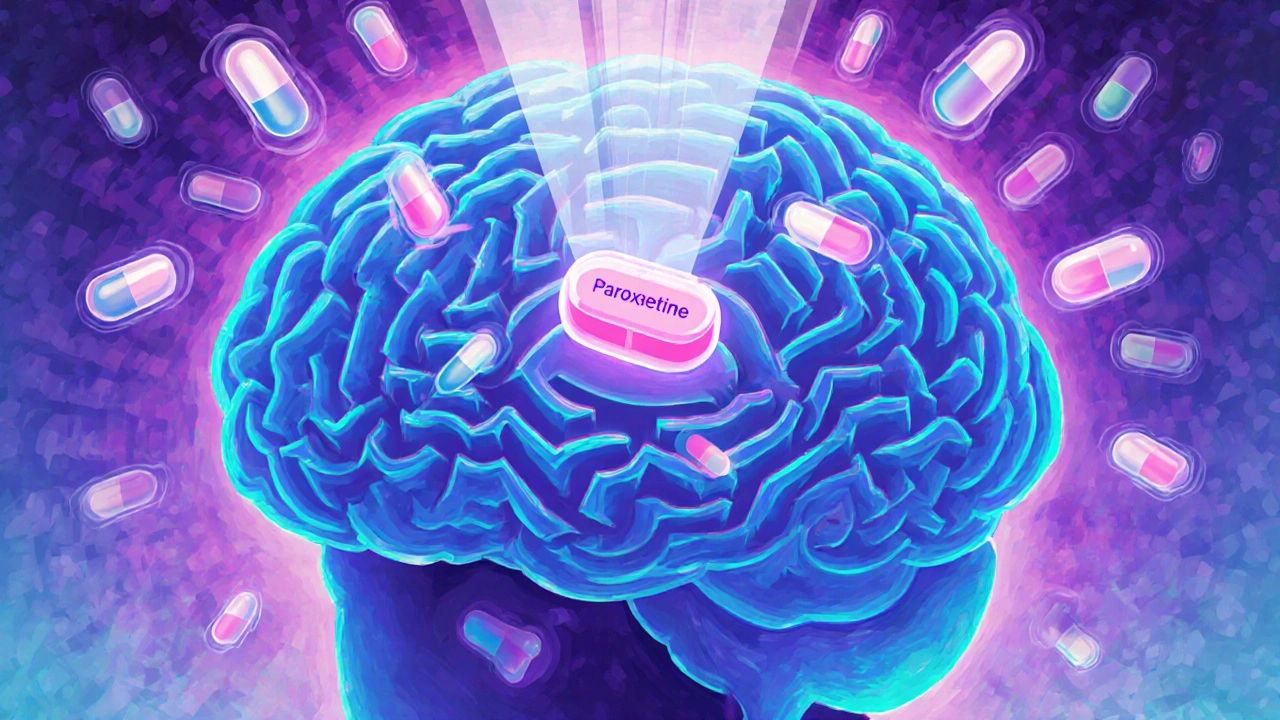Fluoxetine – What It Is, How It Works, and What to Expect
When working with Fluoxetine, a prescription medication classified as a selective serotonin reuptake inhibitor (SSRI). Also known as Prozac, it is commonly used to treat depression, anxiety, and certain eating disorders. The Fluoxetine dose usually starts low and is adjusted based on response and tolerability, making it a flexible option for many patients.
How Fluoxetine Fits Within the SSRI Family
Fluoxetine belongs to the broader class of Selective Serotonin Reuptake Inhibitors, drugs that block the reabsorption of serotonin, thereby increasing its level in the brain. This class also includes sertraline, citalopram, and escitalopram. The shared mechanism (fluoxetine inhibits serotonin reuptake) means that many of the therapeutic benefits and side‑effect profiles overlap across the group. Understanding this connection helps you anticipate how fluoxetine may feel compared to other SSRIs you’ve tried.
A key semantic link is: Fluoxetine is a type of SSRI; SSRI modifies serotonin levels; altered serotonin affects mood regulation. These triples illustrate why fluoxetine can lift mood and reduce anxiety.
Major depressive disorder (MDD, a mood condition marked by persistent sadness, loss of interest, and impaired functioning) is one of the primary targets for fluoxetine therapy. Clinical studies show that a typical adult starts at 20 mg per day, with many patients seeing symptom improvement within 2–4 weeks. The medication’s long half‑life (about 4‑5 days) provides a smoother withdrawal curve compared with shorter‑acting SSRIs, which can be a practical advantage when tapering off.
Another common indication is generalized anxiety disorder (GAD, a condition characterized by excessive, uncontrollable worry and physical tension). Fluoxetine’s anxiolytic effect stems from the same serotonin boost that improves mood. Patients often report reduced racing thoughts and calmer physical responses after a few weeks of steady dosing.
Side effects are worth a close look. The most frequent include mild nausea, insomnia, and a dry mouth, which usually fade as the body adjusts. A less common but critical risk is serotonin syndrome, especially when fluoxetine is combined with other serotonergic agents like tramadol or certain migraine medications. Monitoring for symptoms such as agitation, rapid heart rate, or muscle rigidity is essential, and any sign should prompt immediate medical advice.
Drug interactions extend beyond serotonergic drugs. Fluoxetine is a potent inhibitor of the liver enzyme CYP2D6, so it can raise levels of medications metabolized by that pathway, such as certain beta‑blockers or antipsychotics. Always share a complete medication list with your prescriber to avoid unexpected spikes in blood levels.
Special populations need extra attention. In pregnancy, fluoxetine crosses the placenta, and while many women continue treatment to prevent relapse, doctors weigh the benefits against potential neonatal adaptation syndrome. For adolescents, fluoxetine is one of the few SSRIs approved for depressive disorders, but close monitoring for increased suicidal thoughts is mandatory during the first few months.
Below you’ll find a curated set of articles that dive deeper into fluoxetine’s comparisons with other antidepressants, real‑world patient stories, safety checklists, and dosing guides. Whether you’re starting a new prescription or looking to fine‑tune an existing regimen, the collection offers practical insights to help you make informed decisions.
Paroxetine vs Alternatives: Comprehensive SSRI Comparison
A detailed comparison of paroxetine with other antidepressants, covering efficacy, side effects, dosage, and guidance for choosing the right option.





